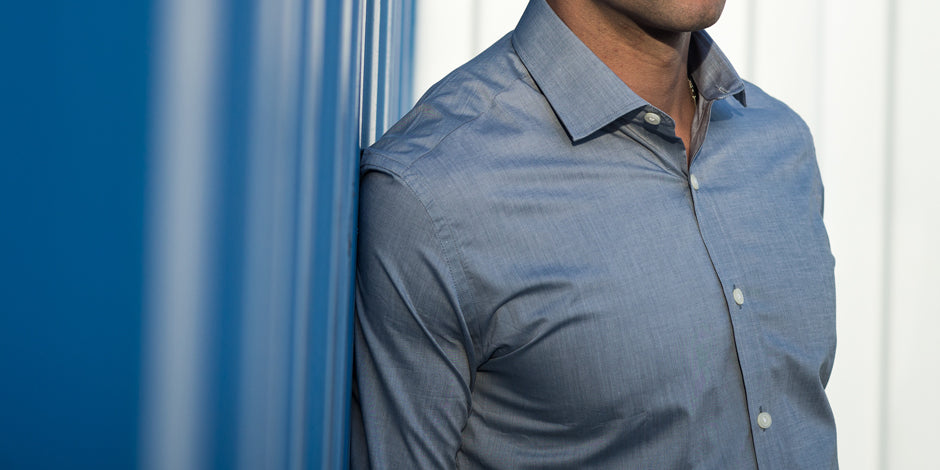A Guide to Better Fitting Dress Shirts
If you're on a mission to find fitted men's shirts, you've come to the right place! We could go on about how Hugh & Crye shirts are the best, but we'd rather introduce you to the elements of better shirt fitting. That way you can decide for yourself.

Shoulders
The seam where the sleeve attaches to the body of a fitted dress shirt should hit close to the top of your shoulders. Mass brands tend to cut their shirts too large (to fit more people, of course), and so you'll often see the seam sliding down onto the arm. If the shoulder seam is riding up towards your neck, that's an indication that the shirt is too tight, and usually due to the shape of the armhole.

Collar (Neck)
Collar size is measured in inches from buttonhole to button when laid flat. The range is often between 14" and 18" (think “pencil neck" and “linebacker," respectively). You should be able to button the collar easily with room for two fingers to fit—any more and it's too loose, any less and it's too tight. Note that the collar size can be a bit smaller/larger than your true size if you rarely wear ties or button the top button of your shirts. In other words, don't sweat the collar size if you're not going to be using the top button. Here's a deeper dive into how a dress shirt collar should fit.

Chest
The best dress shirts fit comfortably around the chest, under the armpits, and across the upper back, giving you a full range of motion. A fitted shirt will feel snug, but not too tight. Your chest should "fill out" the shirt in a way where your body is discernible under the fabric. Note: If the buttons pull when you're standing still with your arms down, it's too tight.

Armhole
The armhole of a dress shirt—its shape and size—dictates how a shirt will fit in the chest, shoulder, and armpit. Most shirt brands with Small-Medium-Large sizing cut their armholes big, to fit a wide range of body types. If you're noticing fabric hanging under arm, that's not good. Your armhole should be contoured in a way that creates a tapered feel under your arm, yet leaves a full range of motion.

Body/Waist
Men's dress shirts should taper from the chest to the waist, following the contours of the body and creating a clean line (i.e., no excess fabric) between the shirt and pants when tucked in. A great fitted shirt often has two vertical back darts centered over the small of your back, which allows the shirt to taper at the waist.

Sleeves
Fitted shirts have a high armhole, allowing for a tapered sleeve that follows the shape of your arms without excess fabric. When buttoned, the cuff should fall right at the base of the thumb (there's room for some personal preference here). Just like your chest, your arms should fill out the sleeves of your shirt in a way that doesn't leave excess fabric. Excess fabric in the sleeves will often fold and billow giving an unflattering look.

Length
The shirt hem should be long enough for you to comfortably wear the shirt tucked or untucked. Two ways to look for this: First, when your shirt is untucked and buttoned, the tail should fall just past the back pockets of your pants. Note, we say "pants," and not jeans, as most guys wear their jeans a little low on the waist. The second way to know whether you have the right length is to tuck in the shirt. When tucked in, raise your arms above your head and see if the tails pop out from your pants. If so, your shirt could be a little too short.
Find Your Hugh & Crye Fit
It doesn't matter if you're short, tall, slim, or athletic - a fitted shirt is much more flattering than the alternative. Now that you have a good idea of what fitted dress shirts should look like, find your Hugh & Crye perfect fit, and experience what it feels like to wear a great fitting shirt off the rack.